In recent years, electric bikes have become more than just a trend — they’re transforming the way people move, commute, and connect with their cities. What started as a niche option for early adopters has grown into a global movement, with millions of riders embracing the convenience, freedom, and fun that e-bikes bring to everyday life.
From city streets to countryside trails, e-bikes are turning heads and changing habits. Rising fuel prices, growing climate awareness, and the demand for healthier, more active lifestyles have all played a role in this surge. But at the heart of the e-bike boom is one simple truth: they make riding a bike easier and more enjoyable for everyone.
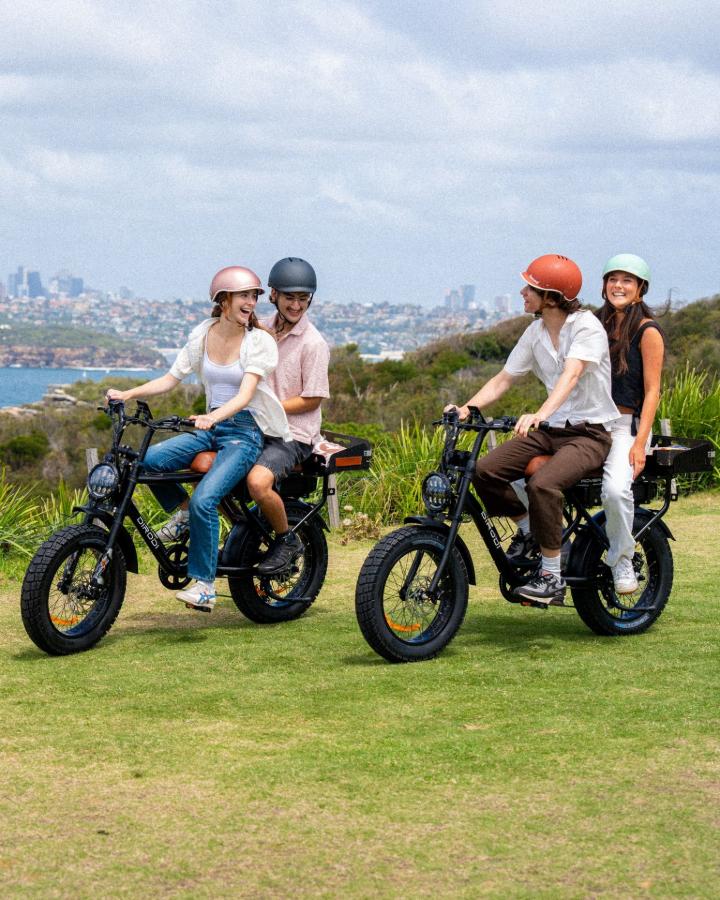
Technological innovation has supercharged this growth. Batteries are more powerful and longer-lasting, motors are smoother and more responsive, and modern designs blend performance with style. These advances have made e-bikes more accessible, whether you're commuting to work, riding for fitness, or simply enjoying the outdoors.
Governments and city councils around the world are also backing the movement, investing in bike-friendly infrastructure and offering incentives to get more people riding. As a result, e-bike sales are reaching record highs, and industry experts predict continued growth in the years to come.
E-bikes are no longer just the future of transport — they’re the present. They offer a sustainable, affordable, and incredibly fun way to move through the world. Whether you're new to riding or a lifelong cyclist, there's never been a better time to go electric.
Here in Melbourne, we’re witnessing a quiet revolution on two wheels. E-bikes have taken off across the city, turning everyday riders into enthusiastic commuters, weekend explorers, and passionate advocates for cleaner, smarter transport. And it’s no wonder — Melbourne is made for e-biking.
With a growing network of bike lanes, scenic trails, and e-bike-friendly infrastructure, getting around on two wheels has never been easier. Whether you're cruising along the Capital City Trail, zipping through Fitzroy, or climbing hills in the Dandenongs with a bit of motor assist, e-bikes open up a whole new way to experience our city.
Melburnians are embracing e-bikes for all kinds of reasons. For some, it’s about skipping the traffic and avoiding crowded public transport. For others, it’s the environmental impact — choosing a zero-emissions option that still lets them get where they need to go. And for many, it’s the joy of riding without the strain, thanks to powerful motors and pedal assist.
E-bikes are also bringing more people into cycling. They’re ideal for riders of all ages and fitness levels, making it possible to tackle longer distances, steeper climbs, or just keep up with faster friends. Plus, with rising fuel costs and the increasing price of car ownership, an e-bike is a smart and affordable alternative.
Local bike shops across Melbourne are reporting record demand, and the community of e-bike riders is growing fast. Group rides, e-bike tours, and city events are becoming part of the culture, creating more connection and excitement than ever before.
So if you’re thinking about joining the e-bike revolution, now’s the time. The roads — and trails — are open, and Melbourne is ready to ride.
1. E-Bike Public Infrastructure and Parking in Melbourne
Melbourne has emerged as one of Australia’s most bike-friendly cities, with its public infrastructure evolving to meet the rising demand for sustainable mobility, including electric bicycles (e-bikes). As more commuters and recreational riders adopt e-bikes, local councils and the Victorian government have responded with dedicated facilities and strategic policies to encourage safer and more convenient riding.
A cornerstone of Melbourne’s e-bike infrastructure is its expanding network of dedicated bike lanes and shared paths. Many of these lanes are protected by physical barriers or painted lines that separate riders from motor vehicle traffic, improving safety. The City of Melbourne, along with surrounding municipalities like Yarra and Port Phillip, has invested significantly in expanding these routes, especially along major corridors such as St Kilda Road, Elizabeth Street, and Swanston Street.
In addition to on-road lanes, off-road bike trails offer scenic and efficient routes that connect urban and suburban areas. Trails such as the Capital City Trail and Merri Creek Trail serve dual purposes: they support daily commuters and also offer recreational opportunities in green, traffic-free environments. These trails are ideal for e-bike riders, offering a smoother experience over longer distances.
A critical aspect of e-bike integration into the urban transport ecosystem is secure and accessible parking. Melbourne has implemented a number of initiatives to accommodate e-bikes and reduce footpath clutter. Designated e-bike and e-scooter parking bays have been rolled out in key areas, especially in the City of Yarra, to promote orderly parking and minimize conflict with pedestrians. These bays are often geofenced, requiring users of shared e-bike services to end their rides in specified areas.
Moreover, bike hoops and bicycle shelters are located throughout Melbourne’s CBD and inner suburbs. These facilities often include surveillance or lighting to discourage theft, a common concern for e-bike owners. Some newer developments and public transport hubs also feature secure, card-access bike parking cages known as Parkiteer facilities.
In terms of integration with public transit, Melbourne has adopted a relatively inclusive approach. Riders can take their e-bikes on trains free of charge, provided they do not obstruct doors or walkways. Some regional buses offer front-mounted bike racks, and V/Line services allow folding e-bikes or, conditionally, full-sized ones, depending on space.
As Melbourne continues its push towards a low-emissions future, the city's commitment to e-bike infrastructure and parking is expected to grow. With comprehensive planning, multi-modal connectivity, and a strong emphasis on safety and convenience, Melbourne stands as a model for urban e-bike integration in Australia.
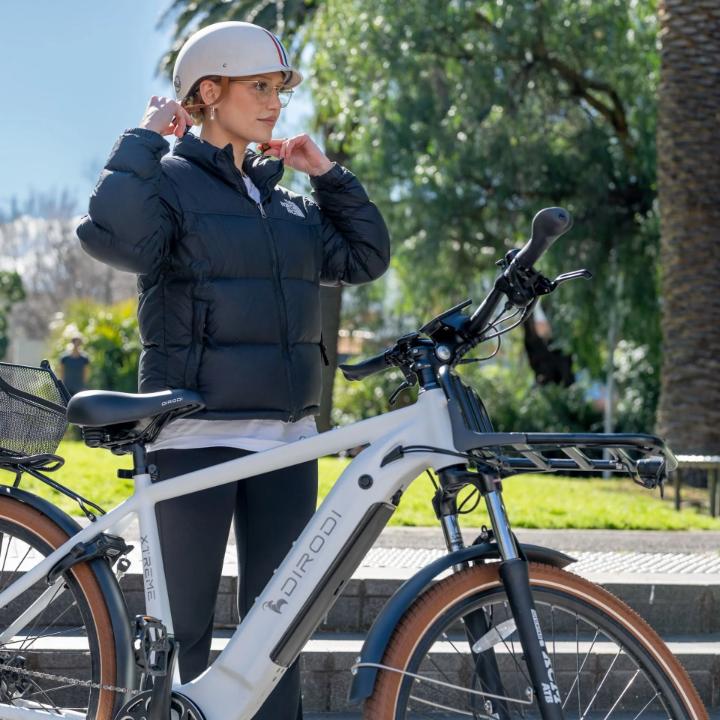
2. Public Scenic E-Bike Trails in Melbourne
Melbourne is renowned not only for its cultural vibrancy and coffee culture but also for its extensive network of scenic bike trails, many of which are perfectly suited for e-bike riders. These public trails provide a safe, picturesque, and often traffic-free way to explore the city's diverse landscapes—from riverbanks and wetlands to urban parks and historic landmarks.
2.1. Capital City Trail
The Capital City Trail is perhaps Melbourne's most iconic loop for cyclists and e-bike users. Spanning approximately 29 kilometers, this well-maintained shared-use path encircles the inner city and connects many of Melbourne’s major attractions, including Federation Square, the Royal Botanic Gardens, Melbourne Zoo, and Docklands. The trail follows sections of the Yarra River, Merri Creek, and Moonee Ponds Creek, offering riders changing scenery and frequent rest areas. It’s relatively flat, making it ideal for e-bikes and casual cyclists alike.
2.2. Merri Creek Trail
A tributary of the Capital City Trail, the Merri Creek Trail runs through the northern suburbs, including Fitzroy North, Brunswick, Coburg, and Northcote. It’s a lush green corridor bordered by native plants and wildlife. The trail is paved for much of its length and includes scenic views of the creek, small waterfalls, and parks. It’s a great ride for those looking to experience Melbourne’s natural beauty close to the city. E-bikes are especially handy on the few hilly sections and for covering longer distances between attractions.
2.3. Main Yarra Trail
Stretching over 38 kilometers, the Main Yarra Trail follows the Yarra River from Southbank to Warrandyte, meandering through bushland, golf courses, parks, and suburban areas. It’s one of the most scenic rides in Melbourne and is perfect for e-bike riders who want to experience both nature and urban life. Key highlights include Dights Falls, the Abbotsford Convent, Fairfield Boathouse, and Heide Museum of Modern Art. The trail is mostly sealed but includes some gravel sections, which are easily handled by most e-bikes.
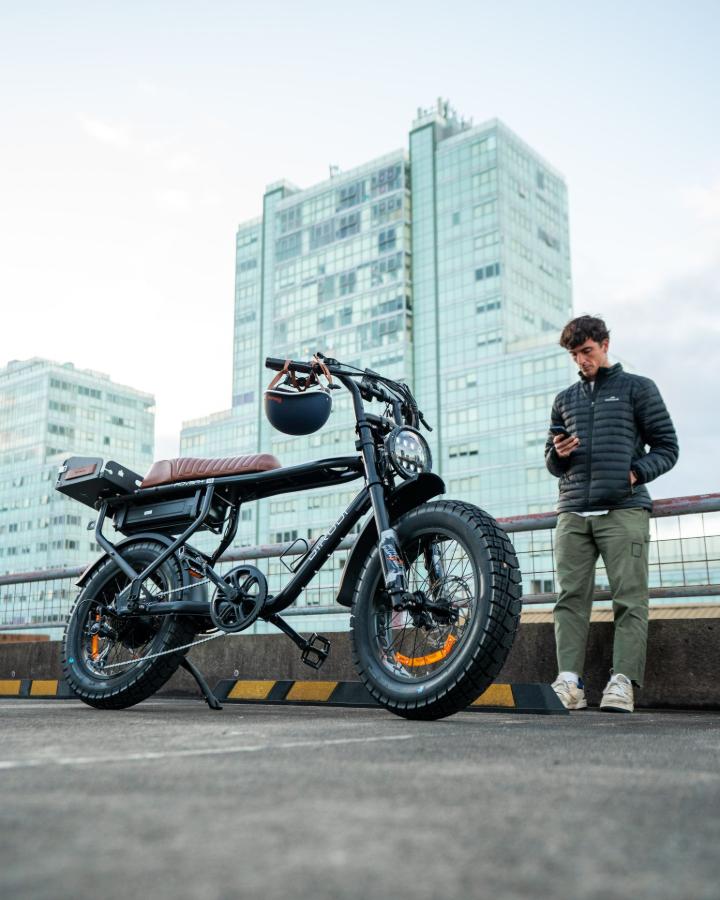
2.4. Gardiners Creek Trail
This trail provides a peaceful ride through Melbourne's eastern suburbs, connecting the Main Yarra Trail in Burnley to areas such as Malvern East and Blackburn. The Gardiners Creek Trail winds through parklands, residential neighborhoods, and alongside quiet water bodies. E-bike riders appreciate the mostly flat path, frequent shade, and proximity to public transport, making it an ideal choice for family rides or commuters.
2.5. Bay Trail (Port Melbourne to Mordialloc)
For ocean views and fresh coastal air, the Bay Trail is a top pick. Running along Port Phillip Bay, this trail starts near Port Melbourne and travels south through seaside suburbs like St Kilda, Brighton, and Sandringham. The paved path follows the coastline closely, offering uninterrupted views of the water and access to beaches, cafes, and public amenities. E-bikes make this longer route (up to 20 km one way) a breeze, even for less experienced riders.
In conclusion, Melbourne’s scenic public e-bike trails offer a unique and accessible way to explore the city’s urban and natural beauty. Whether you’re commuting, sightseeing, or just enjoying a relaxing ride, these trails provide well-maintained paths, safe riding conditions, and an abundance of sights and sounds to enjoy—all powered effortlessly by an e-bike.
3. E-Bike Theft Protection and Secure Parking in Melbourne
With the rapid rise in e-bike popularity across Melbourne, ensuring theft protection and secure parking has become an essential concern for both private owners and public service operators. E-bikes are not only a green and efficient mode of transport, but they also represent a significant financial investment, often ranging from $2,000 to over $6,000. As a result, Melbourne’s local councils, businesses, and riders are increasingly focused on strategies to deter theft and provide safe, accessible parking options throughout the city.
Melbourne Police and Bicycle Network have issued repeated warnings and guides encouraging riders to be vigilant, particularly in high-traffic and inner-city suburbs such as Carlton, Fitzroy, and St Kilda. The most common mistakes include leaving e-bikes unlocked or using weak cable locks that can be cut in seconds.
Read more: How to Protect Your Electric Bike from Theft
3.1. Effective Locking Methods
A primary deterrent against theft is the use of strong, quality locks. Melbourne authorities and cycling advocacy groups recommend D-locks or U-locks made of hardened steel, ideally used in combination with a secondary chain or cable lock. This double-lock method secures both the frame and wheels to an immovable object.
Smart locks and GPS-enabled anti-theft systems are also becoming more common among high-end e-bike models. Some bikes include built-in alarms or immobilization features that deter tampering. Riders are encouraged to choose e-bikes with these features, or to retrofit them using aftermarket accessories.
3.2. Secure Public Parking Infrastructure
Melbourne has taken proactive steps to offer safe parking infrastructure for both private and shared e-bike users. One of the most notable services is the Parkiteer secure bike parking system, available at over 100 locations across Victoria, including major train stations such as Southern Cross, Richmond, and Caulfield. These enclosed cages offer swipe-card access and are monitored for added security. Registration is free with a refundable deposit, making it an excellent option for daily commuters.
In addition, the City of Melbourne and nearby councils like Yarra and Port Phillip have designated e-bike and e-scooter parking zones in busy precincts. These zones are marked with signage and geofenced for use by public e-bike share services like Lime. Riders who park outside of designated areas may receive warnings or fines, helping reduce clutter and enhance safety for pedestrians.
3.3. At-Home and Workplace Storage
For residential users, secure storage at home is vital. This includes storing e-bikes inside locked garages or using wall mounts and ground anchors. In multi-unit dwellings, building managers are encouraged to provide secure bike cages with CCTV and restricted access. Many new apartment developments now include bicycle storage facilities as part of sustainability planning.
Workplaces across Melbourne are also adding secure end-of-trip facilities with bike lockers, showers, and charging stations, making it easier for employees to use e-bikes as a daily commuting option.
In summary, protecting your e-bike in Melbourne involves smart parking choices, proper locking, and utilizing secure infrastructure. As the city continues to promote cycling, a combined effort from riders, councils, and law enforcement is creating a safer, more secure environment for e-bike users.
4. Electric Bike Laws and Rules in Melbourne, Australia
As e-bikes grow in popularity across Melbourne and Australia, it's crucial for riders to understand the laws that govern their use. Whether you're commuting through the city, riding for leisure, or exploring Victoria’s scenic trails, staying compliant with local regulations ensures a safe and enjoyable experience.
4.1. Motor Power
E-bikes in Australia are generally classified into two main legal categories, based on how the motor assists the rider and the maximum continuous power output.
1. Pedal-Assisted E-Bikes (Up to 250 Watts): The most common road-legal e-bikes in Australia are pedal-assist models, often referred to as "Pedelecs." These bikes provide electric assistance only when the rider is pedaling. According to national law (except in NSW), these bikes must have a motor with a maximum continuous power output of 250 watts. The motor must cut off at 25 km/h, meaning electric assistance stops once you reach that speed.
A common misconception is that these bikes cannot have throttles. However, a throttle is allowed — as long as its function is limited to assisting only up to 6 km/h. This feature, known as a "start assist," helps the rider get rolling, especially when starting on an incline or from a full stop. After reaching 6 km/h, the rider must pedal to maintain assistance.
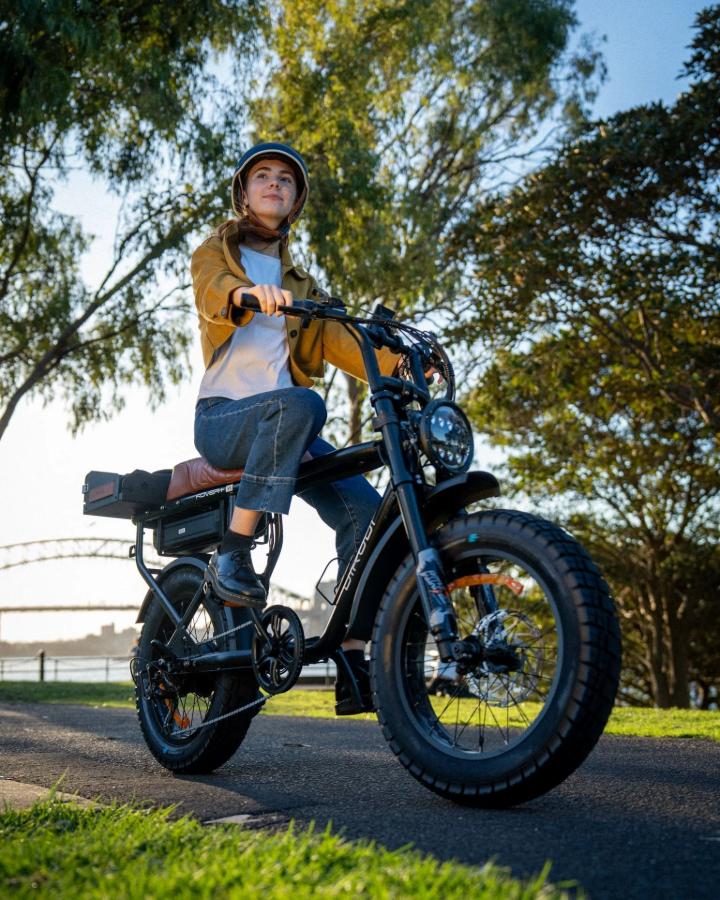
2. Throttle-Assisted E-Bikes (Up to 200 Watts): The second category includes e-bikes that can be powered entirely by throttle, without pedaling. These are limited to a 200-watt motor output, and like their 250W counterparts, the motor must stop assisting once the bike hits 25 km/h. However, due to the limited power, 200W throttle-only bikes struggle on hills and are less commonly manufactured or used in Melbourne.
As of February 2023, NSW updated its e-bike laws to allow 500W pedal-assist e-bikes, while maintaining the same throttle limitations (200W max). However, this increase in power does not apply in Victoria, where the 250W limit still stands for pedal-assist models.
4.2. Speed Limit
Although legal limits cap assistance at 25 km/h, e-bikes are often capable of higher speeds. For example:
- A 250W motor might reach speeds of 30 km/h with moderate pedaling.
- A 500W e-bike can reach 35–40 km/h.
- A 750W motor could go up to 50 km/h, depending on terrain and rider input.
However, using a high-powered e-bike above legal limits on public roads can be illegal. Some e-bikes, such as the DiroDi Rover 750W, come with settings that allow power limiting to 250W for road use. Still, authorities have not clearly defined whether this guarantees compliance, so it’s advised to consult your local transport department before using such bikes on public roads.
4.3. Helmets
Across all Australian states, including Victoria, wearing a helmet while riding an e-bike is mandatory. The helmet must be approved and certified to Australian Standard AS/NZS 2063, with newer models (post-2011) marked for compliance. Failure to wear a helmet can result in fines of up to $300 in Victoria — but more importantly, helmets help prevent serious head injuries in accidents.
4.4. Carrying Passengers
The legality of carrying passengers depends on who the passenger is and how they’re being transported:
- Children can legally ride on e-bikes using certified child seats or bike trailers.
- Carrying adult passengers is generally not allowed, unless your bike is specifically designed and approved for it — which most standard e-bikes are not.
4.5. Licensing, Registration, and Road Use
You do not need a driver’s license to ride a legal e-bike in Australia. E-bikes are not required to be registered or insured like motor vehicles, as long as they conform to the definitions laid out by the Australian Road Rules:
- Throttle-assisted: max 200W, up to 25 km/h
- Pedal-assisted: max 250W, throttle assist only up to 6 km/h, also limited to 25 km/h
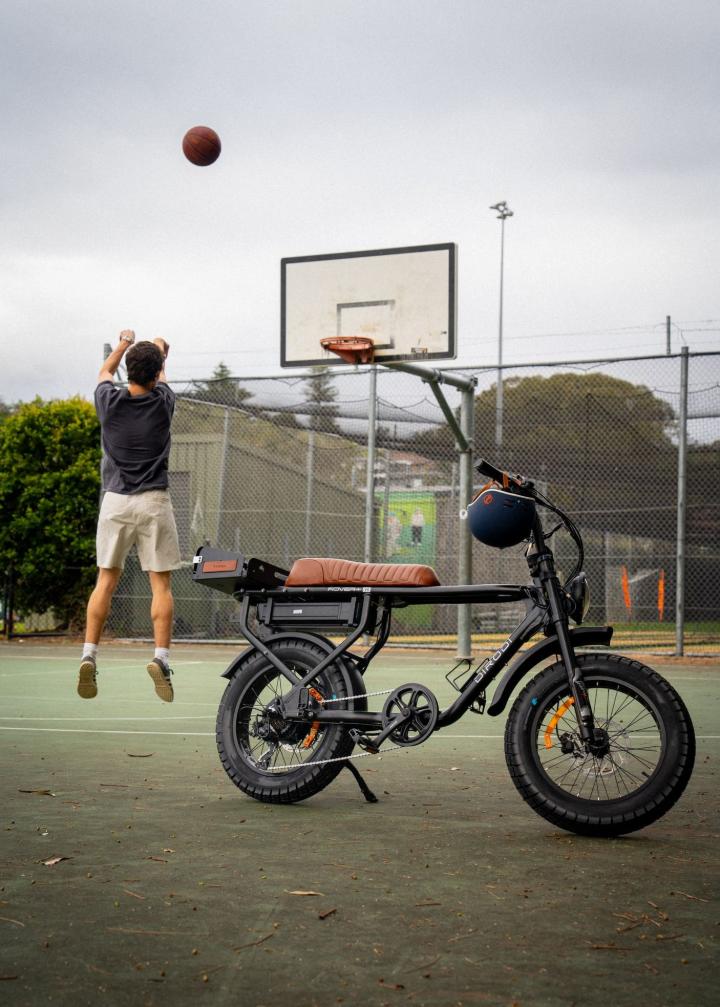
4.6. E-Bike Rules Specific to Victoria
Victoria is considered one of Australia’s most bike-friendly states, with Melbourne leading the way in cycling infrastructure. But riders must follow specific rules to stay safe and legal.
Lighting Requirements: Your e-bike must be equipped with a white front light visible from 200 metres, a red rear light also visible from 200 metres and a red rear reflector. These are especially important when riding at night or in low-visibility conditions.
Phone Usage While Riding: You cannot use a mobile phone while cycling unless it’s mounted in a proper holder (e.g., for GPS use). Using a phone in your hand — for calls, texts, or navigation — can result in fines exceeding $400.
Riding in Pairs: In Victoria, you are allowed to ride side-by-side with one other cyclist, as long as you stay within 1.5 metres of each other. Riding next to more than one other person is not permitted unless you are overtaking.
Melbourne’s roads and trails are increasingly welcoming to e-bike riders, but staying informed about legal requirements ensures a safer, more enjoyable ride. Whether you’re new to e-biking or a seasoned enthusiast, understanding and following these rules helps protect you — and the growing e-bike community across Victoria.
Check out our guide to Electric Bike Laws & Road Rules in Australia for a more detailed explanation of the laws in every Australian state. If you want to know more about the amount of fines and other rules in the state of Victoria:
https://www.vicroads.vic.gov.au/safety-and-road-rules/road-rules/penalties/fines
https://www.vicroads.vic.gov.au/safety-and-road-rules/road-rules/a-to-z-of-road-rules/bicycles